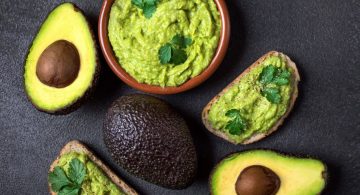The Dos & Don’ts Of Juicing For Optimal Health

Juicing is an integral component to the cleansing lifestyle. Done right, juicing will flood your body with hydration, enzymes, and nutrients, and can also help heal digestive issues. Fresh, raw vegetable juices are a potent source of highly absorbable nutrition. They provide the body with a powerful jolt of vitamins and minerals — with minimal digestive effort required. Raw green vegetable juices also help hydrate and loosen impacted waste in the bowel, so that your colonics are as effective as possible. Put another way, fresh, raw vegetable juices help draw out impacted matter from the bowel tissues, and rehydrate it so that it’s more easily removed from the body via your colonic treatments.
But here’s the other thing about juicing: Juicing vegetables and leafy greens is the key to getting the juicing game right. Basically, you want tons of nutrition without too much sugar from fruits. So, when you juice, focus on a base of vegetables and leafy greens. Lemons and limes are also delicious additions to your juices, and carrots or small amounts of green apple or other low sugar fruits are great to toss into your juicer, too. It’s really easy to come up with juice recipes that you genuinely look forward to, without getting too much sugar from fruit. Bearing all that in mind, here are some quick tips on the dos and don’ts of juicing for optimal health and amazing colonics.
Do Invest In A Good Juicer
Great, inexpensive juicers are a key kitchen appliance for the cleansing lifestyle. The cost of buying bottled, high quality green juices can really add up day after day, so having the option to make juice at home is helpful. The Breville Juice Fountain Plus is an excellent juicer for the price, and you can find refurbished Breville models on Amazon for even less.
Do Juice Mostly Vegetables
The most healing and beneficial juices are those that emphasize fresh, raw vegetables. Cucumbers and celery make a great inexpensive base for your juices, and help up your daily green quotient. Adding some raw beets or carrots can also make your juices heartier for the winter months. And beets are excellent for colon health, too.
Do Emphasize Leafy Greens
Leafy greens are the power greens in your green juice. By extracting the fiber via the juicing process, you get a powerful dose of chlorophyll, phytonutrients, minerals, and enzymes from your greens that are highly absorbable — which is why green juices are so deeply energizing and healing to the body.
Do Add Lemons & Limes
Lemons and limes are delicious in juices, and they help neutralize the strong “green” taste from leafy greens, making green juices more palatable for some people. Low-sugar lemons and limes are also highly alkalizing to the body.
Do Opt For Cold Pressed When Buying Premade Juices
You’ve got tons of options when buying premade juices these days. There are many brands making it easier than ever to grab high quality green juices on-the-go. Between juice bars, groceries, and your local co-op, you’ve got options. Just make sure to choose unpasteurized and cold pressed juices when you do buy your juice — this way, the enzyme and nutrient content is kept well in tact.
Do Drink Juice On An Empty Stomach
Juice is highly digestible, and in terms of food combining, it boasts a rapid transit time. The best time to drink your daily green juice is in the morning on an empty stomach, while waiting up to 45 minutes — or until your stomach is empty — before moving on to fresh fruit or a green smoothie.
Don’t Worry About Being Perfect When It Comes To Non-Organic Juices
It’s great if you can afford to juice organic produce, but if not, then just use the highest quality produce you can find. Non-organic juice is better than no juice! Also, many small, local farms don’t spray their crops with pesticides, but since the organic certification is costly, many can’t afford it. So, you might be able to find high quality and pesticide-free produce nearby at a fraction of the cost of your local health food store. And seasonal farmers’ markets offer some great options as well. Just do your best — no stress!
Don’t Juice Too Much Fruit
For your green juice recipes, aim for a base of celery and cucumber, and emphasize leafy greens and other low-sugar vegetables. If you do add fruit for a bit of sweetness, opt for small amounts of low-sugar fruit like green apple — which is delicious with lemon and ginger. Juicing high quantities of fruits can really up the sugar content in your juices, and can also be problematic for anyone struggling with Candida albicans infections and other bowel imbalances. If you do handle fruit well, it’s best to eat whole fruit alone on an empty stomach. Fruit does digest quickly, but the fiber slows down how fast the natural sugars are absorbed by the blood stream.
Don’t Drink Sugary Pasteurized Juices
Conventional bottled fruit juices are not recommended for the cleansing lifestyle. They tend to be high in sugar, while the pasteurization process deadens the live enzymes present in raw juices. Your best best for snagging your daily juice is to juice at home when you can, and to buy high quality cold pressed raw green juices on those days when your schedule is tight.
Juicing is a stellar way to get a major boost of nutrition every day, while also providing powerful hydration and healing effects in the body. When you drink fresh green juices regularly, you’ll notice better energy, improved digestion, and greater skin clarity — while also amping up the effectiveness of your colonic treatments to boot.



